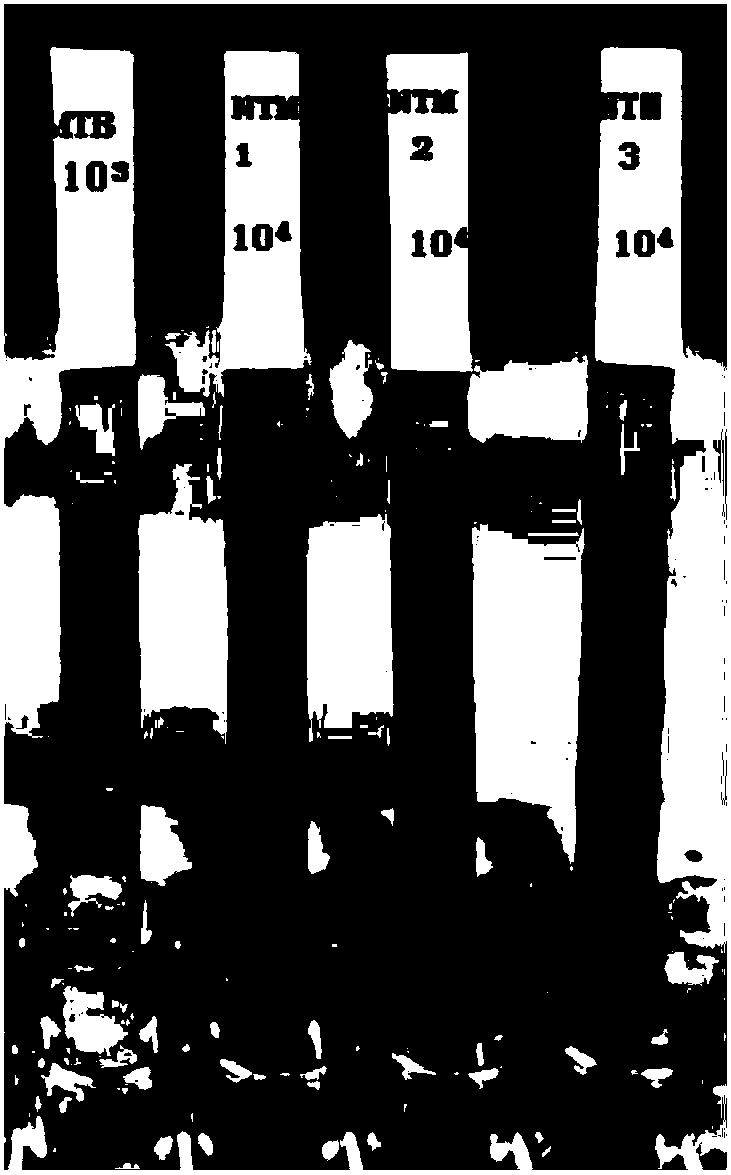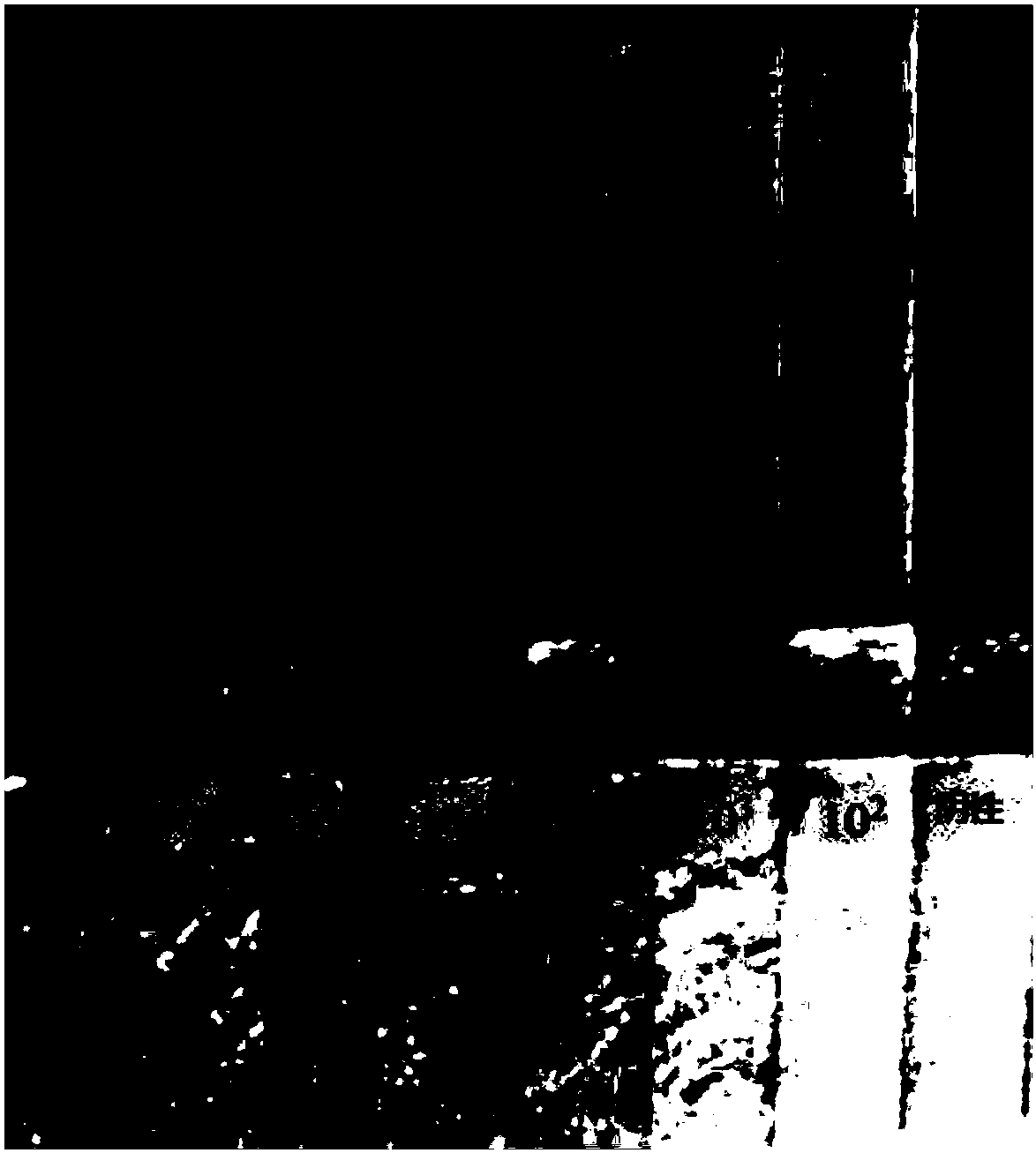Method of detecting microorganisms and application thereof
A technology of microorganisms and detection probes, which is applied in the field of detection of microorganisms, can solve the problem that there is no non-amplification method to identify microorganisms, and achieve the effect of simple method, high efficiency and short time
- Summary
- Abstract
- Description
- Claims
- Application Information
AI Technical Summary
Problems solved by technology
Method used
Image
Examples
Embodiment 1
[0044] 1) Utilize the conserved sequence of Mycobacterium tuberculosis as shown in SEQ ID NO:1, design the specific detection probe of Mycobacterium tuberculosis, and carry out FTIC mark at the 5' end of specific detection probe sequence, the designed The specific detection probe is shown in SEQ ID NO: 2, and the FTIC label is carried out at the 5' end of the sequence: 5'FTIC-TACGGTGCCCGCAAAAGTGTGG3';
[0045] 2) prepare 10 respectively 2 、10 3 、10 4 、10 5 、10 6 copies / mL of Mycobacterium tuberculosis genomic DNA sample;
[0046] 3) Mix the specific detection probe, the random detection probe labeled with 5' end biotin, Buffer and genomic DNA, the final concentration of the specific detection probe is 0.02 μM, and the final concentration of the random detection probe is 10 μM;
[0047] 4) After mixing, heat to 95°C for 5 minutes, and cool to room temperature naturally;
[0048] 5) Drop all the mixture on the commercially purchased nucleic acid test strips, and read the r...
Embodiment 2
[0051] 1) Utilize the conserved sequence of Mycobacterium tuberculosis as shown in SEQ ID NO:1, design the specific detection probe of Mycobacterium tuberculosis, and carry out FTIC mark at the 5' end of specific detection probe sequence, the designed The specific detection probe is shown in SEQ ID NO:3, and the FTIC label is carried out at the 5' end of the sequence: 5'FTIC-GAGTGCTGGGCTGGAAGA3';
[0052] 2) prepare 10 respectively 3 copies / mL of Mycobacterium tuberculosis genomic DNA sample and 10 4 copies / mL of nontuberculous mycobacteria (NTM) genomic DNA;
[0053] 3) Mix the specific detection probe, the random detection probe labeled with 5' end biotin, Buffer and genomic DNA, the final concentration of the specific detection probe is 0.02 μM, and the final concentration of the random detection probe is 10 μM;
[0054] 4) After mixing, heat to 95°C for 5 minutes, and cool to room temperature naturally;
[0055] 5) Drop all the mixture on the commercially purchased nucl...
Embodiment 3
[0058] 1) Utilize the conserved sequence of Mycobacterium tuberculosis as shown in SEQ ID NO:1, design the specific detection probe of Mycobacterium tuberculosis, and carry out FTIC mark at the 5' end of specific detection probe, the specificity of design The detection probe sequence is shown in SEQ ID NO: 2, and the FTIC label is carried out at the 5' end of the sequence: 5'FTIC-TACGGTGCCCGCAAAAGTGTGG3';
[0059] 2) prepare 10 respectively 6 、10 5 、10 4 、10 3 、10 2 、10 1 copies / mL of Mycobacterium tuberculosis genomic DNA;
[0060] 3) Coating the specific capture probe on the surface of the microtiter plate or PCR tube;
[0061] 4) Mix Buffer and genomic DNA in a microtiter plate or PCR tube, heat to 95°C for 5 minutes, and cool to room temperature naturally;
[0062]5) Wash to remove unbound nucleic acid, add 200ul of commercially purchased DNA dye Accublue dye to the holes of the microplate or PCR tube respectively, incubate for 20 minutes, and detect in BIOTEC Syner...
PUM
| Property | Measurement | Unit |
|---|---|---|
| Sensitivity | aaaaa | aaaaa |
| Sensitivity | aaaaa | aaaaa |
Abstract
Description
Claims
Application Information
 Login to View More
Login to View More - R&D
- Intellectual Property
- Life Sciences
- Materials
- Tech Scout
- Unparalleled Data Quality
- Higher Quality Content
- 60% Fewer Hallucinations
Browse by: Latest US Patents, China's latest patents, Technical Efficacy Thesaurus, Application Domain, Technology Topic, Popular Technical Reports.
© 2025 PatSnap. All rights reserved.Legal|Privacy policy|Modern Slavery Act Transparency Statement|Sitemap|About US| Contact US: help@patsnap.com



